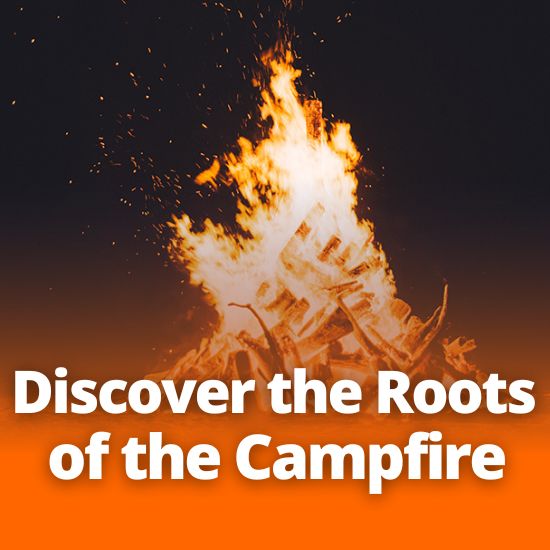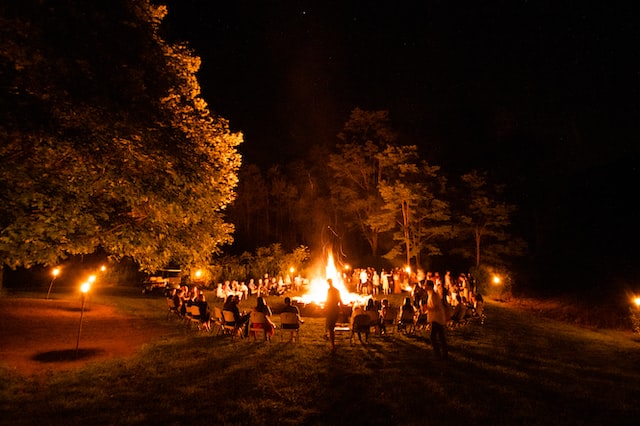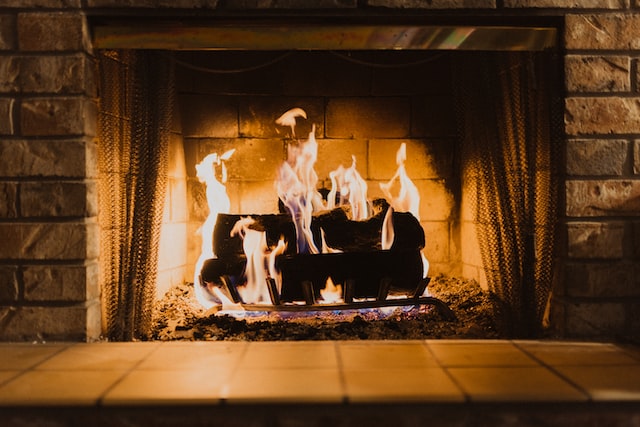
Discover the Roots of the Campfire Story
It is unsurprising that the link between the development of humans as we are today was vastly affected by our ability to control fire. Scientists and anthropologists have linked this to an increase in the size of our brains and guts, and evidence of our development from prey to predator with larger creatures no longer posing such as dangerous threat as we began to develop new means to protect ourselves and face the dark of the night when the monsters came out to play. Further than just this development in our ability to think, create, and learn, was the shift in our socialization and community. With firelight extending the hours of human activity, no longer subjected to the rise and set of the sun, our ancestors’ circadian rhythms shifted and so did their interactions.
Studies in human development suggest that “socializing around a communal fire” offered our ancestors time to expand their imaginations and social interactions that were not possible during daylight hours when they had to focus on ensuring survival. This newfound leisure time may have created a space for different social interactions than those throughout the day. Anthropologist Polly Wiessner argues that “conversations that take place at night around a fire have a different quality, and different content than those that take place during the day.”

I’m sure you’ve felt it; once the day is done, dinner has been eaten and the light has waned, surrounding a fire with friends and family casts a dreamlike quality over reality. We’re more open, relaxed, able to sit and be in the moment in ways we aren’t allowed during the hustle and bustle of the day. Wiessner believes that this dreamlike quality, this separation from the immediacy of each other as experienced during the day, may loosen us up to each other, allow us to be more open and empathetic. So, it is no surprise that these ethereal hours have been taken to tell stories of all natures!
Studies like Wiessner’s tell us that these stories were most likely about the adventures and experiences of the past. Stories that would allow a multigenerational audience to learn about their family and community, how their society worked and developed as well as rules and traditions. Before pen and paper, and far before you were able to read words typed on a PC as you are now, we were only able to learn about ourselves and our society through oral traditions. So now, in the time of Facebook and Instagram, email and text messages (and blog posts!), how does firelight and storytelling factor into our modern lives?
Or rather, how does the lack of this communal fire affect our society, and therefore our understanding and development of relationships and community? Has social media taken its place? Wiessner argues that when gathered around the fire, we are drawn to the flame and are less likely to be watching those around us, less likely to check the facial expressions and body language of others. In this concealment, she states that we were more focused on listening, and therefore more likely to gain an empathetic view of the stories we are told. Has a computer screen and modern lighting severed this?

Well think about the prominence fire still has in our society, particularly in times we crave intimacy: candlelit dinners, fireplaces in the living room roaring on Christmas morning, making s’mores on a camping trip. While the communal fire has died, humans are still as drawn to flames as we ever were. Really, we’re all giant moths. In the times of peace where we find ourselves once again gathered around a fire, or even the modern equivalent now: sharing a meal at the dinner table, or gossiping over a glass of wine in the kitchen, we see these spaces where we, in the hours of darkness, turn to socializing rather than a time of production.
And so, the campfire has become the purest version of this. Whether you’ve made dinner on the stove or cooked over the coals, at the end of the day we gather and share stories and jokes, and sometimes spread a little fear. These moments, where the world only stretches as far as the light from the fire, and the stars gather above, we are able to sit and simply be, no worries about deadlines or gas prices. Far from the city lights we can find calm again amongst our communities, no matter how big or small, and find our own stories to whisper into the safety of the dark.
(information from Smithsonian Magazine, Los Angeles Times, “Embers of Society” Dr. Polly Wiessner PhD.)